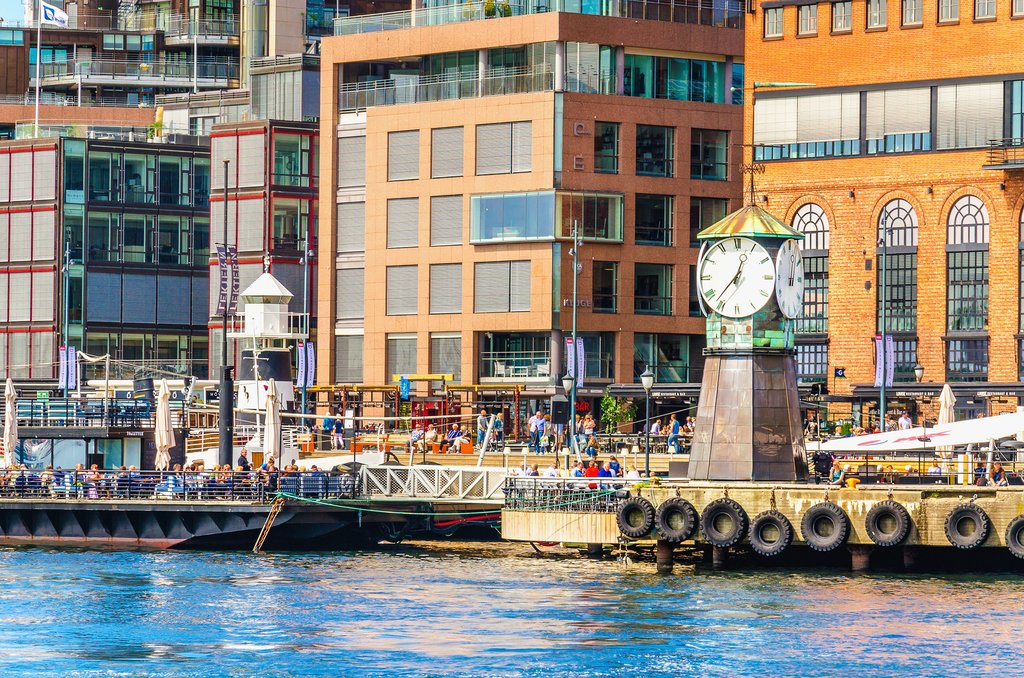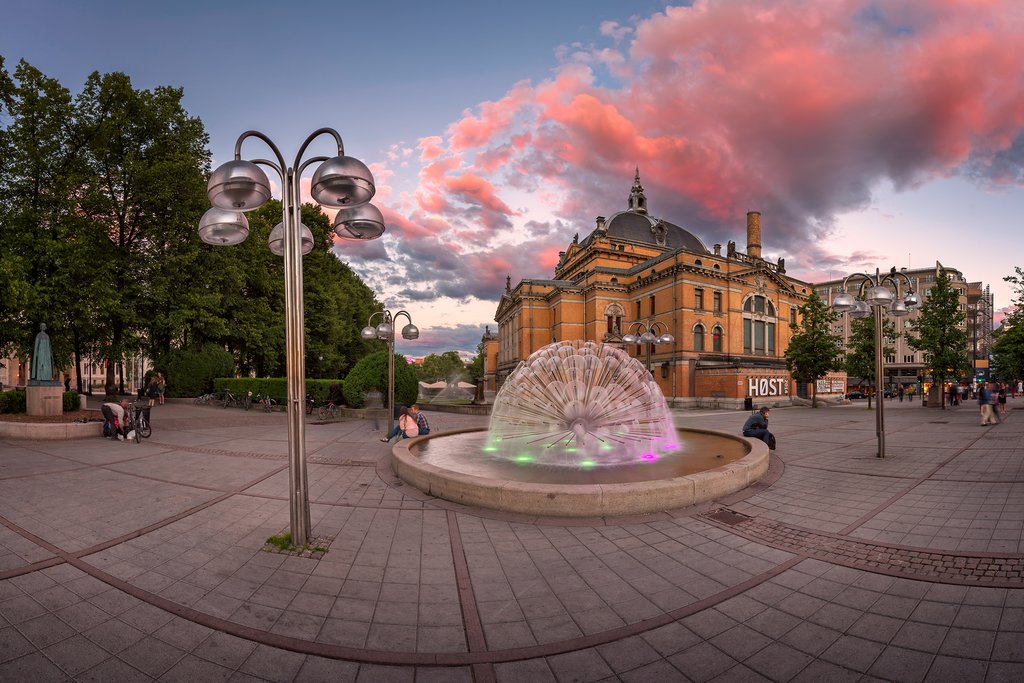As you walk these streets, notice how Oslo feels laid out in front of you, open and entirely accessible. As we explore the city, this will be the theme—even if you're just a visitor, you're welcome here, and you'll leave feeling like a local.
Arts & Culture

First things first: Get to the city center, near the harbor. It's here you'll find the Oslo Opera House; don't worry about having tickets, though you certainly should if you're interested. With a snack in tow, climb up to the roof (it's incredibly slanted to look like an iceberg and built for walking), sit a spell, and take in the view. Once you've found your moment, head inside—the interior is just as impressive.
Then, walk toward the Akershus Fortress. Again, you don't have to purchase a ticket should you not want to — the fortress is simply in the city, a ready shortcut to other neighborhoods, or a spot to study the waters of the Oslofjord. Here, history sprawls out in front of you, and there's no gated entrance you have to cross or line to fall into.
While other tourists are heading to Vigeland Sculpture Park or the National Gallery to see Munch's "The Scream," head to Ekeberparken. This is where Munch got his inspiration for his most famous painting. The Astrup Fearnley museum is a must for modern art lovers, too.
Karl Johans gate and Prinsens gate are the two main thoroughfares through the city's heart, and here you'll find some serious high-end shopping. Aker Brygge and Tjuvholmen—on the harbor—are good options for dining, gallery-hopping, and shopping, too. For more museums, head to Bygdøy, or the "museum peninsula." It's worth it just for the relaxing ferry ride required to get there.
The Neighborhoods

Oslo city center is the hub of it all, and that's not changing—it's here you'll find the Opera House, the fortress, City Hall (open and free to the public), and the Royal Palace. The aforementioned Aker Brygge is adjacent and equally dynamic.
Frogner is one of the city's most sophisticated neighborhoods. Walk along the Solli Plass area, see a movie at the old-school Gimle kino, and then head to Grünerløkka. It's the opposite: hipster and very bohemian. Vintage boutiques, cafés, and pubs line the streets here. Tøyen is similarly "hip" and full of awesome street art.
Another set of opposites is Grønland and Gamle Oslo & Kampen. The former is Oslo at its most diverse—come here for great Japanese food. The latter is Oslo at its most traditional; you'll get a chance to see some of the last-remaining wooden houses in the city.
Chat with a local specialist who can help organize your trip.
Eating & Drinking

For a million choices and budget-friendly options, head to Oslo's former industrial area in Vulkan/Grünerløkka. Here you'll find Mathallen, one of the largest food halls in the region. You can grab local goods to take home, too. Vippe Food Hall in Vippetangen is perhaps even more international.
For more on-a-shoestring grub, book it to Torggata (a street), Oslo's hub of street food and food trucks. This is known as the "trash gourmet" scene, so expect world-class chefs to be behind the eats.
For views, check out Ekebergrestauranten or Festningen—they're both overlooking the Oslofjord from above. And if you need a Michelin star with your meal, check out Galt, Nordic cuisine at its finest. For breakfast all day, head to Gunnars Generasjonsbar. And pizza and burgers (because, yes, Oslo does those well, too), Illegal Burger, and Hell's Kitchen. You've got to see it to believe it.
For coffee and cocktails, the list might be even longer. Tim Wendelboe, Supreme Roastworks, and Hendrix Ibsen can all get you your morning caffeine fix. Brugata Landhandleri offers both coffee and cocktails to smooth the transition, and once night falls, HIMKOK, Crowbar, Andre til Høyre, and Kulturhuset are all well-known. For beer, check out Oslo Mikrobryggeri. Did you know you wandered into a foodie scene?
Getting Around

Oslo is compact, and there's no other way to explore it than on foot if you can. That being said, the city does offer the subway, trams, buses, and ferries, should you need them. The Ruter Reise app may help you with schedules and timetables if you're in a pinch.
If you can, combine Oslo with other parts of the country via train, rental car, or bus. Consider these itineraries that add on Southern Norway, the mountains and fjords, or Bergen and the Sognefjord.
All in all, the city is safe and sprawled out at your feet. Wander its streets, and you'll feel like a local, too.
